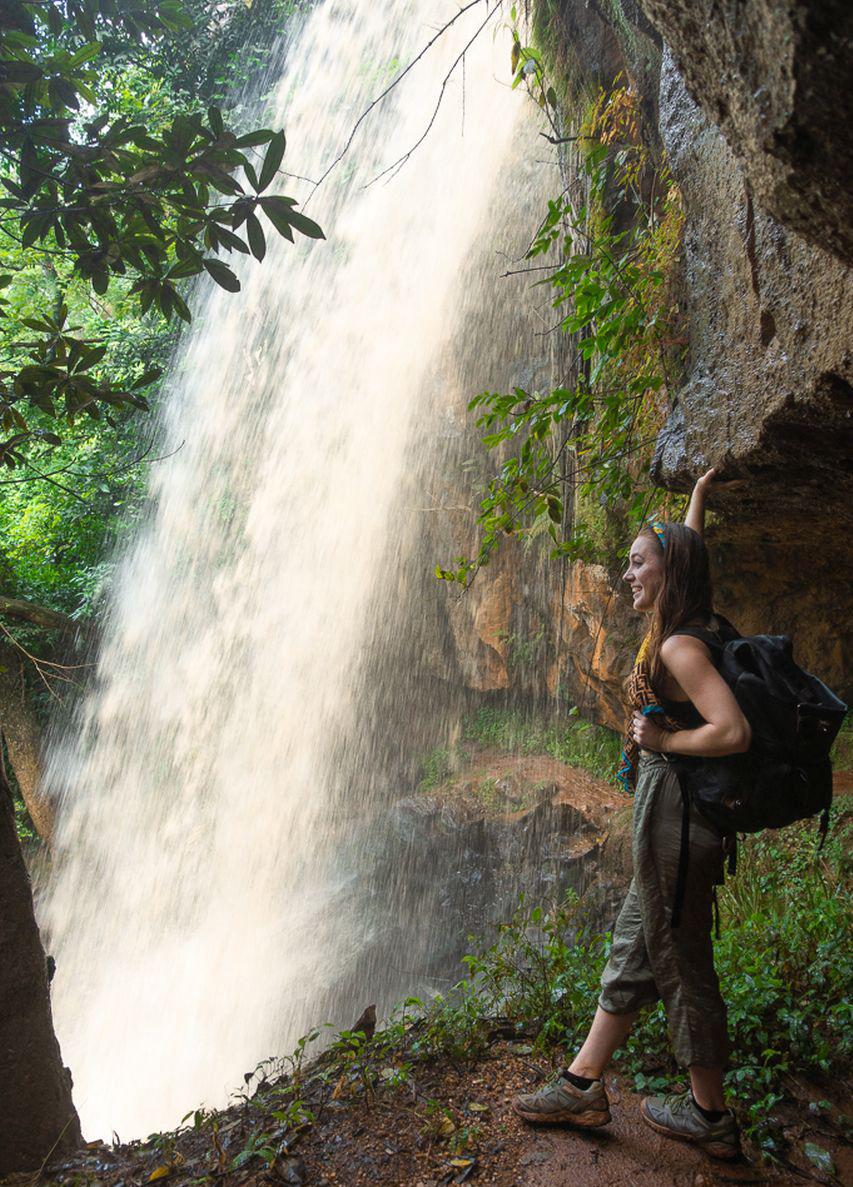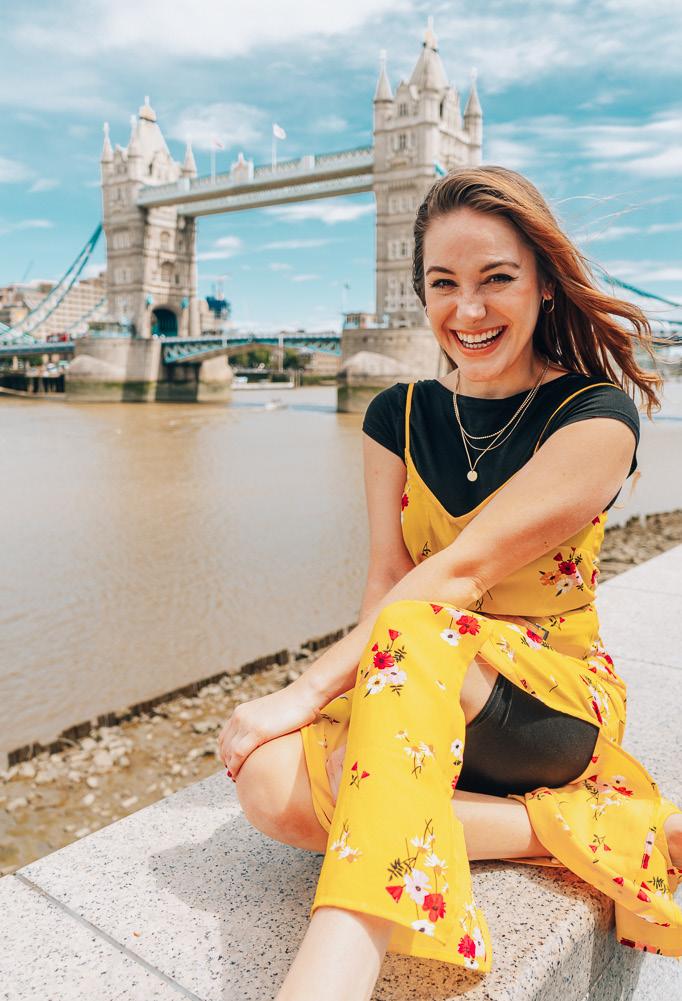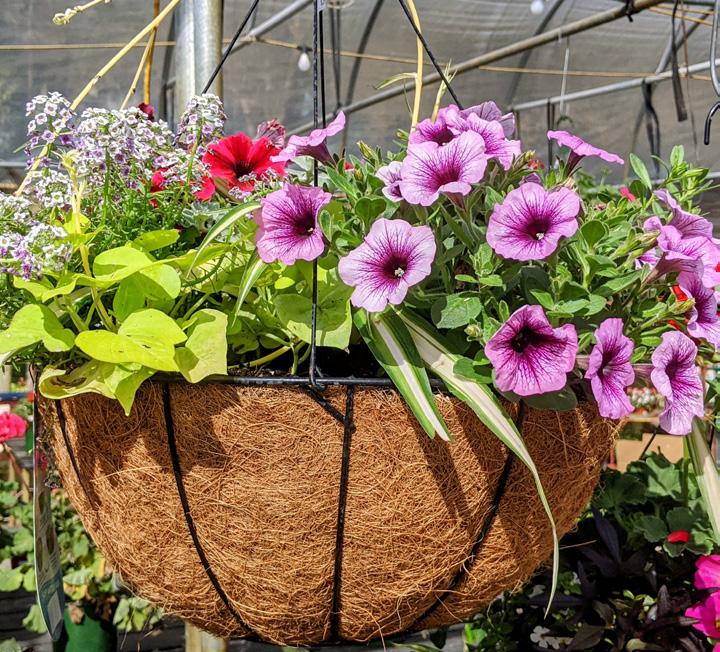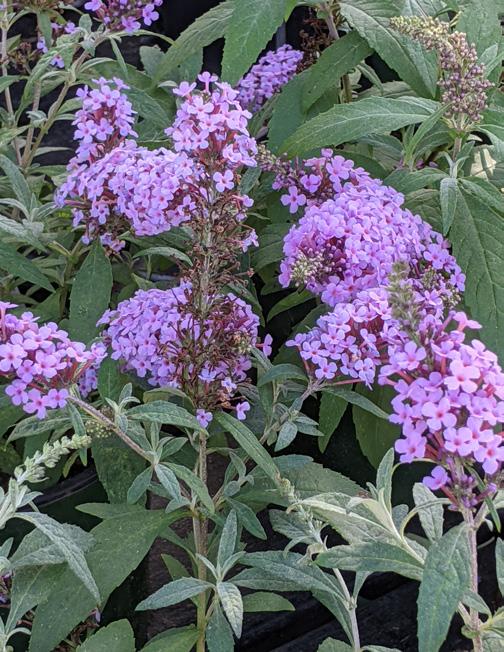
9 minute read
Exploring Books


Advertisement
A Passion for Travel
By Kevin Wierzbicki Photography Credits: Book cover – Peter Parkorr. Author in London – Margarita Samsonova. Author in Malawi – Courtesy of Sabina Trojanova.
The American South is high on the travel list in this new book that explores unforgettable destinations.
When Sabina Trojanova’s parents took their baby daughter on her first family vacation, they had no idea that they were also giving the toddler her initial taste of what would become a lifelong passion as well as a vocation. Trojanova is now a successful travel writer and photographer, blogger, and author of the new book “#Wanderlust: The World’s 500 Most Unforgettable Travel Destinations.” “I’m very fortunate to have parents who’ve always prioritized travel,” Trojanova says. “I wasn’t even two years old when I first set foot on a plane on a trip to Mallorca. Our family holidays set the stage for my future career by showing me that the world isn’t a scary place and there are kind people everywhere.” Of course, it took a while before young Sabina could fully grasp the passion that was developing inside her. “I really caught the travel bug when I started exploring on my own,” Trojanova explains. “I moved to London (from her native Czech Republic) when I was 17, then to Moscow two years later, closely followed by Beijing, and it snowballed from there.” By now that snowball has rolled all over the place, including the 500 global destinations that Trojanova highlights in “#Wanderlust.” She’s able to write about so many places in the book because each destination is described in a brief vignette that’s accompanied by a photo, taken either by Trojanova herself or one of her Instagram pals. Broken into chapters including those focusing on beach escapes, cultural immersions, urban jungles, and postcards from the edge, “#Wanderlust” has plenty to offer foodies, art and music lovers, train lovers, and adventurers of all sorts. It is a drool-worthy collection meant to pique interest in places like Belarus, Egypt, Uzbekistan, Nepal, Bolivia, and hundreds of places in between. One of the destinations that Trojanova features in “#Wanderlust” will especially resonate with DeSoto Magazine readers.
“Memphis is one of my favorite cities in the American South,” Trojanova enthuses. “I went on a road trip back in 2017 visiting Nashville, New Orleans, and Birmingham, and I have fond memories of the region. I was in Memphis during the Beale Street Music Festival and enjoyed exploring the city’s musical history by visiting places like Sun Studios and Graceland.” Trojanova says her favorite part of Memphis, however, was the Cooper-Young neighborhood with its diverse population, street art, and incredible restaurants. The Beauty Shop restaurant and Café Ole with its live music and inexpensive Bloody Marias both were mentioned in the book. New Orleans and Nashville both get some love in “#Wanderlust,” as do Gatlinburg and Charleston. As to all of the exciting and exotic destinations that Trojanova covers in “#Wanderlust,” the African nation of Malawi is especially dear to her. “I’ve traveled quite extensively around East Africa over the course of six months,” she says. The natural beauty of the region — from the lush forests of Uganda and Tanzania’s sandy coastline to the rugged Ethiopian Highlands — stole Trojanova’s heart. “I ended up extending my stay there by a full month,” she says. “Not only is Malawi stunning with waterfalls, lakeside beaches, and lots of greenery, but the locals are also extremely welcoming. The country also attracts a very laid-back and adventurous travel crowd so you get to meet many interesting people while there. I’m actually organizing a group trip to Malawi in 2022.” One thing about “#Wanderlust” is that its text goes beyond “see this, do that.” One chapter where Trojanova offers some really valuable advice is the section on volunteer travel. “Voluntourism is a contentious subject and rightly so,” Trojanova states. “There are many ways of getting it wrong

and unwittingly causing more harm than good. The volunteering chapter comes with a short guide on how to avoid this, but it’s a topic that requires a fair bit of consideration.” She tells volunteers to contribute value and not to perform tasks that can be done by skilled locals. Her tips also include avoiding shortterm work stints with children and other vulnerable individuals. “The best place to volunteer depends on your particular skillset,” she says. “Personally, I like to offer my photography skills and social media expertise, training that can benefit organizations long after I’m gone.” Trojanova likes to give back, wherever she might be hanging her hat. She’s run a women’s space at a refugee camp in Greece and has recently worked in her adopted hometown of London helping to find new career opportunities for homeless Londoners. She tries to center much of her traveling around learning from people of other cultures. Able to speak seven languages, she still runs into language barriers occasionally, but she finds that a language barrier may really be something else. “Often they’re cultural barriers disguised as language barriers, things lost in translation despite everyone using the right words.” And about the word “unforgettable” in the book title, Trojanova says, “Not a single one of the countries I’ve visited was what I expected it to be! No matter how much you read about a country or how many pictures you see, every country will find a way of surprising you.”
Kevin also learned all about wanderlust at a young age when his father took him along on a two-year stint in Malawi. There’s been no looking back ever since and Africa remains one of his favored destinations.



Bugleweed Mona Lavender

Pretty in Purple
Story and photography by Amelia Grant
Purple flowers bring vibrant color to spring gardens along with nectar for bees and butterflies.
A pop of purple is a wonderful way to celebrate spring and add color to the Southern garden. Bees and native pollinators such as butterflies are primarily attracted to purple, yellow, and white flowers, so adding purple flowers will not only provide the gardener with joy, but butterflies will delight in a sip of nectar and bees will grab pollen to make honey. Plants have purple foliage due to a higher concentration of a pigment called anthocyanin. Some botanists theorize the purple pigment acts as a sunscreen for delicate tissues, while others think it acts as a protective device to notify hungry herbivores of poisons in the plant. “Anthocyanins provide purple coloration and are protective pigments, masking the green color of the chlorophyll when both are present, making leaves appear purple or nearly black,” explains Scott Aker, supervisory research horticulturist of the U.S. National Arboretum. “They help plants by ameliorating temperature and drought stress and counteract the harmful effects on chlorophyll, membranes, and other parts of plant cells. They may also confuse herbivores that equate green coloration with palatable food sources.” In the garden purple draws your eye with its depth of color and contrast to green. (Remember the color wheel? Green and purple are on opposite sides.) Other great complements to purple are whites, greys, chartreuse, and rose red for spice. Purple plants may recede into the background when used in shady places without whites and greys to bring out their colors. In sunnier locations, rose red and whites pop the purple hues. Chartreuse plants may be used in either exposure. Think variegated hostas with purple ajuga in shade gardens and a container filled with purple fountain grass, licorice plant, and a rose red geranium on a sunny patio.

Butterfly Bush Pretty purple colors

PURPLE PLANTS FOR MID-SOUTH GARDENS
Butterfly Bush - Buddleia davidii This shrub is hands down the biggest butterfly magnet in the garden. A deciduous shrub that is available in sizes ranging from dwarf plants that reach about three feet to towering back of the border plants topping 15 feet. They are available in a range of colors, from whites, blues, and purples to nearly red. Butterfly bush is extremely easy to grow, needing full sun (a minimum of eight hours of bright sunlight) and welldrained soils to look its best. If growing in clay soils, plant the shrub high in the ground so water drains away and go easy on the mulch. Spring is the best time of year to plant butterfly bush so it may establish before the wet winter weather sets in. The new sterile purple varieties don’t reseed in the garden. “Lo and Behold” varieties are dwarf plants that are available in several shades of purple. “Miss Violet” is a bigger plant reaching five feet in height.
Purple Fountain Grass - Pennisetum setaceum ‘Dwarf Rubrum’ An ornamental grass sporting purple foliage and offwhite bottle brush flowers during the summer, this touch of purple may be used in the garden as a thriller centerpiece in a container or added to a perennial garden as a focal point or contrast with leafy green plants. Happiest in full sun and welldrained soil conditions, this plant is considered hardy in Zone 9 but may return in Zones 7 and 8 with mild winters and a warm jacket of mulch applied in the fall.
Mona Lavender - Plectranthus ‘Mona Lavender’ While the name brings up visions of tropical fish, this plant boasts purplish leaves and flowers. It may attain 2 feet by 2 feet in a growing season. Sometimes called Swedish ivy, it is a relative of the familiar coleus and grows under similar conditions, partial shade, and abundant water. In the MidSouth Mona may be used as a house plant or summer annual, in containers, or as a bedding plant.
Bugleflower - Ajuga reptans Bugleflower is a stalwart of shady, moist gardens in Zones 6, 7, and 8. A mat-forming groundcover that is relatively carefree once established, it provides an evergreen groundcover for year-round interest and flowers up to 10 feet in mid-spring. Potential pitfalls include crown rot during humid summers and an overabundance of bugleflower in conducive locations. Many varieties of bugleflower are available. Named variety “Purple Brocade” features purple foliage and flowers.
More Purple Garden Plants Forest Pansy Redbud (Cercis canadensis “Forest Pansy”) is a purple-leaved alternative to the beloved springflowering redbud tree. Forest Pansy has rose-pink flowers and new red foliage turns to red-violet as it matures. Burgundy Loropetalum (Loropetalum Chinese “Rubrum”), sometimes called Chinese fringeflower, these purple-leaved beauties with pink or red-fringed flowers are available in dwarf to small tree-sized plants depending on the variety.
Purple Queen (Transcandentia pallida), possibly the most purple available in one plant, is a creeper with purple foliage and flowers. It may be used as a summer annual, in containers or as a bedding plant. Plants may survive mild winters in the ground in Zones 7 and 8.
Amelia Grant is a native of Atlanta, Ga., and a Registered Landscape Architect. She is a freelance food and garden writer sharing gardening adventures at www.theshrubqueen.com.





